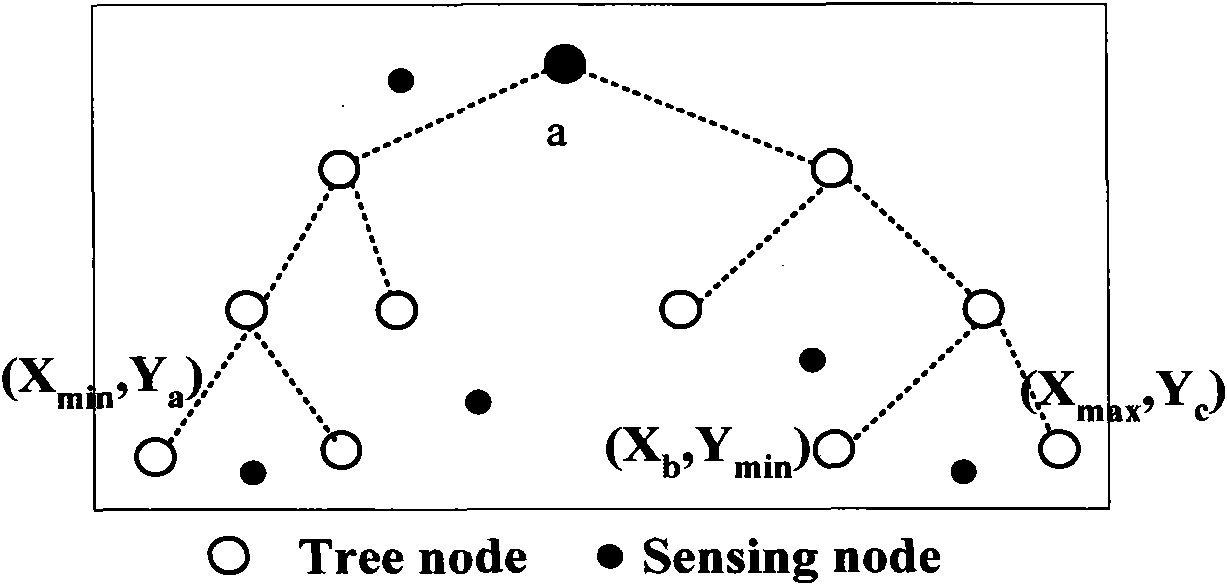Method for detecting event region based on splay tree
An event area detection and event technology, which is applied in electrical components, wireless communication, network topology, etc., can solve problems such as not many and cannot answer queries correctly, and achieve the effect of improving accuracy, high energy efficiency, fault tolerance detection, and improving work efficiency.
- Summary
- Abstract
- Description
- Claims
- Application Information
AI Technical Summary
Problems solved by technology
Method used
Image
Examples
Embodiment 1
[0032] Embodiment one: see attached figure 1 to the attached Figure 5 As shown, an event region detection method based on a stretched tree includes the following steps:
[0033] (1) Random deployment of sensor network nodes;
[0034] see attached figure 1 , assuming that N resource-constrained static sensor nodes are randomly deployed in the detection area R=(r×r), the set S=(s 1 ,s 2 ,...,s N ) description, where s i represents the i-th sensor. Each node has its position information through triangulation, node s i The location of the (x i ,y i ), and each node has a unique ID, the same computing and communication capabilities and energy resources. Nodes achieve loose time synchronization through time synchronization services, and CSMA / CA is used for communication access to reduce channel conflicts. Let by N t A node constitutes an extended tree, each node is called a tree node, and the tree node is used to receive and fuse data, and the rest (N-N t ) nodes are c...
PUM
 Login to View More
Login to View More Abstract
Description
Claims
Application Information
 Login to View More
Login to View More - R&D
- Intellectual Property
- Life Sciences
- Materials
- Tech Scout
- Unparalleled Data Quality
- Higher Quality Content
- 60% Fewer Hallucinations
Browse by: Latest US Patents, China's latest patents, Technical Efficacy Thesaurus, Application Domain, Technology Topic, Popular Technical Reports.
© 2025 PatSnap. All rights reserved.Legal|Privacy policy|Modern Slavery Act Transparency Statement|Sitemap|About US| Contact US: help@patsnap.com



